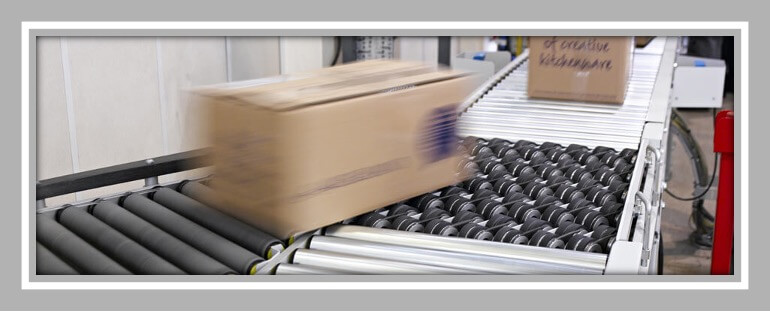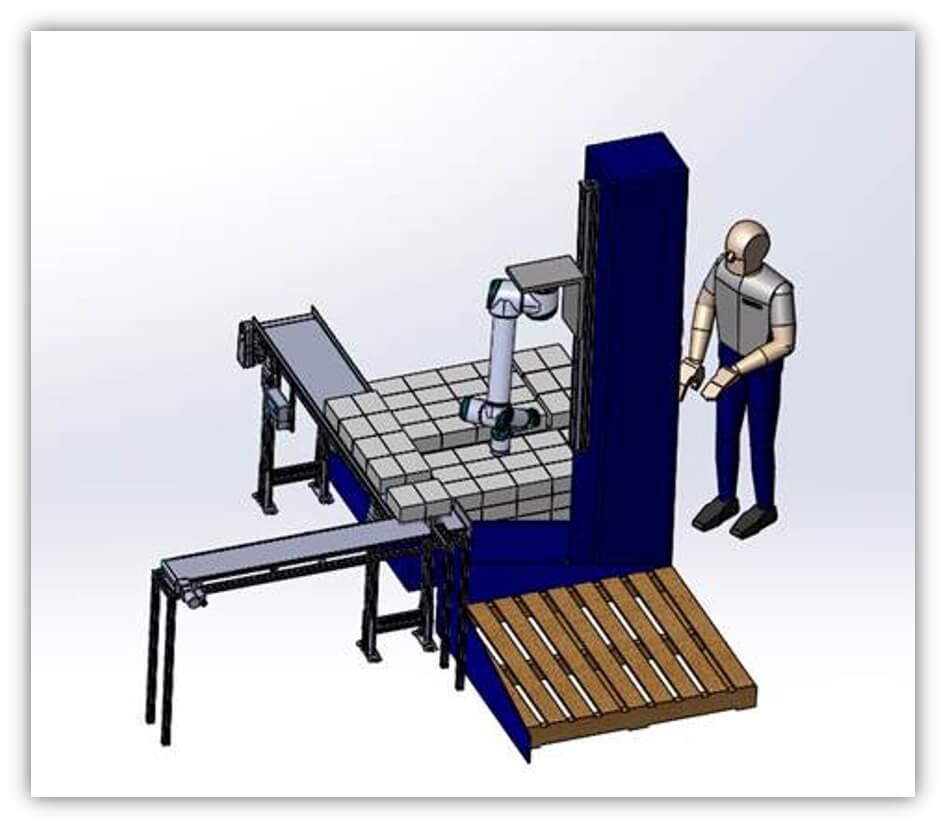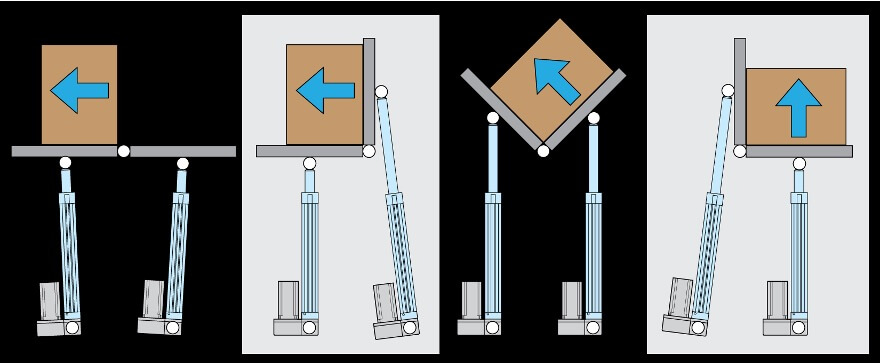Motion control keeps material handling systems moving
By Andrew Zaske on September 20, 2020
 Material handling is one sector of the economy that has been doing well lately. People are staying home and shopping online. As a result, many businesses are shipping more today than ever before. This drives growth in paper products, packaging, sorting and moving materials. Purchased items must be boxed, sealed, labeled and transported. Even before shoppers click the “buy” button, the boxes that goods are shipped in originate in the timber industry: material made from paper and cardboard must been processed, cut, bundled, compressed and stacked. Once the box is made and contents put inside, the box is packaged—bagged, sealed, labeled—and then moved down the line via conveying, palletizing, de-palletizing. There is probably more material handling being done today than ever and at a rate never before seen.
Material handling is one sector of the economy that has been doing well lately. People are staying home and shopping online. As a result, many businesses are shipping more today than ever before. This drives growth in paper products, packaging, sorting and moving materials. Purchased items must be boxed, sealed, labeled and transported. Even before shoppers click the “buy” button, the boxes that goods are shipped in originate in the timber industry: material made from paper and cardboard must been processed, cut, bundled, compressed and stacked. Once the box is made and contents put inside, the box is packaged—bagged, sealed, labeled—and then moved down the line via conveying, palletizing, de-palletizing. There is probably more material handling being done today than ever and at a rate never before seen.
Motion control keeps material handling moving. Multi-axis systems move products up, down, left and right. Material is sorted, diverted, stacked, un-stacked. Traditionally, material handling systems are driven by fluid power—air or hydraulics—but in recent years electric actuation has brought many benefits to the process—and the benefits are not exclusive to material handling. A primary benefit is infinite positioning: the ability to move an actuator half an inch, 48 inches, 8-and-three-quarter-inches, or whatever the required length. Plus, it doesn’t require a wide variety of loose set-up blocks, stops or other mechanical devices to create more than one length of stroke for pneumatics. Electric actuation provides complete and precise control.
Controlling speed–acceleration, deceleration and velocity—is also extremely important in material handling. Material must be handled safely, so it doesn’t break, crush or bend. And, because electric actuators remove the need for an air or hydraulic system, the associated risk from leaking that could damage the product or the process is also removed. Given these advantages, you’d think an electric system is complicated to install, but it’s the opposite. Electric systems are relatively easy to install and require far fewer system components than fluid power.
There are myriad ways electric actuators help improve material handling systems. For a technical comparison, download our white paper comparing the two technologies.
“A technical comparison: Performance of pneumatic cylinders and electric rod actuators.”
Here are three examples of electric linear actuators for material handling:
Package diverting: Easy, low-cost pneumatic replacement
A conveyor manufacturer needed to increase reliability of a package diverter. The pneumatic system caused maintenance and production issues due to the lack of clean, dry air as well as fluctuations in flow and pressure. The manufacturer required a cost-effective solution that would integrate easily with minimal design changes. Replacing the pneumatic system with an ERD electric cylinder and ACS controls provided the economical solution and easily integrated with the existing controls. The ERD is an economical but high duty cycle electric cylinder and is compatible with many NEMA and metric-mount stepper and servo motors to create a flexible, powerful, yet cost-effective electric cylinder solution over traditional pneumatic cylinders. It is especially ideal for gating, sorting, diverting, lane guide adjustments and product changeovers.
Automated palletizing: Actuator gives a lift to robotic arm 
Automated palletizing is an exciting and emerging market. Robots—or “co-bots”—that accurately and quickly stack, sort and divert are ideal for applications such as pick and place modest weighted items, not just in shipping warehouses but also medical warehouses, where it’s important to limit human contact with material for sanitary reasons. But sometimes even a robot needs an extra hand, so to speak.
An automated palletizing machine used a robotic arm to stack boxes on a pallet, but the manufacturer needed to extend the range that the robotic arm could reach. The production rate was fast, so the vertical movement needed to be completed quickly, but it also required a very high bending moment to be supported. The cost of a larger robot with the reach and strength required was outside the customer’s budget, so a hybrid solution using a rodless actuator to position the robot at appropriate heights was selected. A robust pneumatic band cylinder would only have had two positions of movement, so this was not considered. A belt-driven rodless electric actuator could move at 200 inches per second and have infinite positioning capability, but a vertical solution was needed that would prevent the load from falling no matter what happened. A high-force screw-driven B3S rodless actuator provided the force and speed required. Adding a brake to the system ensured that even with a loss of power the unit would not fall. The B3 series of actuators has the mechanical rigidity and moment-loading capability to support the arm when it is fully extended and carry the load (in this case a box). The screw-driven actuator provided the moment, speed, force and duty cycle required. Moreover, the actuator was a standard product, with no special mount or other features added, which reduced time to specify, manufacture and install.
Flipping the box: Soft touch required
A major retailer required a “soft touch” to square up boxes to fit precisely on a shipping pallet. In a series of extend and retract motions, a set of actuators cradle and “flip” the boxes. The conveyor system caused some damage as items were transferred and the manufacturer still wanted speed, but a more controlled motion. The result was to create a box flipper divided into three movements, each using two RSA actuators. The customer’s pneumatic system was replaced with an electric rod style actuator system, which not only provides infinite positioning but precisely controls the acceleration, speed and deceleration of each move during the flip. The motion quickly, accurately and gently stacks boxes.
Find out which material handling system is best for your application. Contact a Tolomatic engineer. Or check out our sizing software.
And don’t forget to download our comparison white paper:
“A technical comparison: Performance of pneumatic cylinders and electric rod actuators.”

 Ask an Engineer
Ask an Engineer